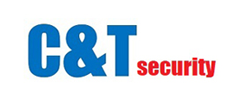How does an Access Control System Operate?
When a credential (card, fob, fingerprint, etc.) is presented to a reader, the reader sends the credential’s information, usually a number, to a control panel / processor. The control panel compares the credential's number to an access control list, grants or denies the presented request, and sends a transaction log to a database. When access is denied based on the access control list, the door remains locked. If there is a match between the credential and the access control list, the control panel operates a relay that in turn unlocks the door. The control panel also ignores a door open signal to prevent an alarm. Often the reader provides feedback, such as a flashing red LED for an access denied and a flashing green LED for an access granted.
The above description illustrates a single factor transaction. Credentials can be passed around, thus subverting the access control list. For example, Alice has access rights to the server room but Bob does not. Alice either gives Bob her credential or Bob takes it; he now has access to the server room. To prevent this, two-factor authentication can be used. In a two factor transaction, the presented credential and a second factor are needed for access to be granted; another factor can be a PIN, a second credential, operator intervention, or a biometric input.
There are three types (factors) of authenticating information:
something the user knows, e.g. a password, pass-phrase or PIN
something the user has, such as smart card
something the user is, such as fingerprint, verified by biometric measurement
Passwords are a common means of verifying a user's identity before access is given to information systems. In addition, a fourth factor of authentication is now recognized: someone you know, where another person who knows you can provide a human element of authentication in situations where systems have been set up to allow for such scenarios. For example, a user may have their password, but have forgotten their smart card. In such a scenario, if the user is known to designated cohorts, the cohorts may provide their smart card and password in combination with the extant factor of the user in question and thus provide two factors for the user with missing credential, and three factors overall to allow access.
Latest News
Contact Us

Name: Tim Li
Tel: 19379304599
E-mail: [email protected]
Skype: ctlitech01
Add: Suite A1, 12/F., Ritz Plaza, 122 Austin Road TST., Kowloon. Hong Kong




 Skype Chat
Skype Chat Mail inquiry
Mail inquiry